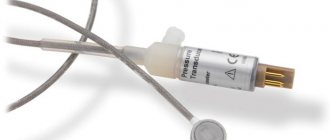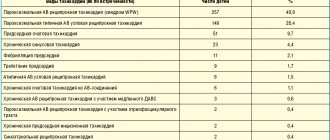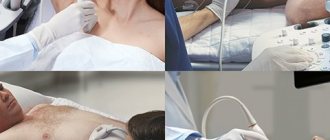The muscles of a healthy baby should be in a certain tone and tense when exposed to irritants. Muscle hypotonia in a child is manifested by weakening of muscles and a decrease or complete absence of muscle response to an irritating factor.
This syndrome is not an independent pathology. It is associated with impaired conduction of nerve impulses and accompanies diseases of the central nervous system (spinal cord and brain) and damage to peripheral nerves.
It is important for parents to notice muscle hypotonia in time, without attributing it to the phlegmatic temperament of the baby. In Kaliningrad, muscle hypotonia in children is successfully treated by specialists at the Edkarik clinic. You can make an appointment with a pediatric neurologist at a time convenient for you.
Types of muscle hypotonicity
Depending on the cause that led to the development of muscle hypotension, two forms of pathology are distinguished:
- Congenital - develops as a result of gene mutations or chromosomal abnormalities. This form can be confirmed using a laboratory karyotype test.
- Acquired - due to the adverse effects of negative factors on the child’s body after birth. Hypotonia is observed in children with cerebral palsy who have suffered head and back injuries, neuroinfections, and poisoning with neurotropic poisons.
- Muscle hypotonia is also classified taking into account the localization of the pathological focus:
- central - occurs with various lesions of the brain and spinal cord;
- peripheral - develops as a result of local damage to neurons and is characterized by hypotonia of individual muscles.
In newborns, muscle hypotonia manifests itself in generalized and isolated forms. In the first type, diffuse damage to all muscle tissue is observed, which is accompanied by an extremely serious condition of the child. The isolated type is characterized by hypotonia of individual muscle groups.
Depending on the stage of the pathological process, muscle hypotension in children can be acute or chronic.
Feedback - a child with a weak shoulder girdle cannot hold his head up
We would like to express our deep gratitude to Pavel for the help provided to our four-month-old son! The doctor is very attentive, tactful and punctual, a true professional in his field! At the first appointment, he correctly identified the problem, explained the action plan in detail, and by the 2-3rd session the changes were obvious. They complained that the son was absolutely unable to hold his neck and arms in a position on his stomach. Now we roll over and stand on our elbows, even holding our necks for a long time and with pleasure. Pavel immediately found a common language with the child, special thanks for your kindness, attention and accuracy!
More detailsSign up
Why does muscle hypotonicity occur?
Congenital muscle hypotonia is often diagnosed immediately after the baby is born. During an examination by a neonatologist, a decrease in the tone of the muscular system and the inability to flex the joints are detected. Congenital hypotension is one of the symptoms of the underlying disease and goes in parallel with neurological disorders and stigmata of dysembryogenesis.
Congenital muscle hypotonicity in children is observed in the following pathological conditions:
- Down syndrome, Marfan syndrome, Menex syndrome, Leigh syndrome, Krabbe syndrome, Tay-Sachs syndrome and others;
- pituitary dwarfism;
- septo-optic dysplasia;
- non-ketotic hyperglycinemia.
Muscle hypotonia accompanies the following intrauterine development disorders:
- cerebellar ataxia;
- sensory integration dysfunction;
- dyspraxia;
- hypotonic cerebral palsy.
Muscular hypotonicity of congenital origin develops gradually and manifests itself at different rates of progress or regression of the pathology.
Acquired forms of muscle hypotonia occur:
- with genetic abnormalities (metachromatic leukodystrophy, Rett syndrome, muscular dystrophy);
- for mercury poisoning;
- as a result of past infections;
- for autoimmune disorders;
- after suffering traumatic brain injuries;
- as a complication after vaccination;
- as a result of birth injuries complicated by asphyxia and hemorrhages.
Muscle hypotonia is observed in the clinical picture of hypothyroidism, cerebellar developmental disorders, and Sandifer syndrome.
Diagnostics
Even based on a physical examination, the doctor may perform certain diagnostic tests, such as the myotonic response to exercise , cold exposure, or other stimulation. But it is very important to differentiate these myotonias from progressive diseases, such as myotonic dystrophies. And for differential diagnosis, special research methods are required. These studies include EMG, which measures the electrical activity of muscle tissue; laboratory tests (blood tests and DNA analysis) muscle biopsy, which is sometimes necessary for the final diagnosis of muscle disease.
Manifestations of hypotension: note to parents
A child’s lethargy is often mistakenly perceived as a calm character, and increased painful drowsiness as healthy, sound sleep. In such cases, it is important not to miss the pathology.
Attentive parents can detect decreased muscle tone by indirect signs:
- While the baby is awake, you should pay attention to his activity and reaction to external stimuli. A child's low activity should alert parents.
- During sleep, in infants with muscle hypotonicity, the arms and legs are straightened (a specific symptom of the pathology), the palms are wide open. If the mother opens her clenched fist to the child, the palm remains open.
- When feeding a baby, the mother should pay attention to whether he takes the breast or pacifier well and how long he eats. Muscle hypotension can be suspected in cases where the baby eats slowly and gets tired quickly during feeding.
As a rule, children suffering from decreased muscle tone lag behind in physical development: they later begin to hold their heads, roll over onto their stomachs, and hold their toys. In addition, babies do not gain weight well.
How to strengthen a weak shoulder girdle for a 3-4 month old child?
The main strengthening effect is, of course, the use of muscles for their intended purpose, i.e. gymnastics, but you need to start small, with a massage. Before exercise, it is advisable to warm up the muscles and give them a slight toning state. Vigorous kneading is carried out according to the classical massage scheme, we are primarily interested in the biceps, triceps, deltoid, scapula muscles, pectoralis major and minor. We tone them up with a massage, and then begin strengthening exercises.
1. “boxing” lying on your stomach and on your back, these are the most effective exercises.
2. Handle pull-ups. If the reflex does not work, then just small tugs on the handles while rocking in different directions.
3. Lying on his stomach, place the baby on his elbows and hold this position for several minutes.
4. Lying on his stomach with support on his elbows, rock the baby to the right and left, shifting the weight alternately to the elbows.
5. Starting from 3 months, place the baby more often on the floor, on his stomach.
6. Riding a fitball while lying on your stomach.
How to determine decreased muscle tone?
In some cases, manifestations of muscle hypotonicity are not clearly expressed and are not immediately detected by parents and pediatricians. Symptoms may also vary depending on the age of the child and the severity of the underlying disease. During the initial examination of the baby, a decrease in muscle tone is identified as a separate syndrome. To establish the cause of its development, the neurologist prescribes a comprehensive examination of the child and, if necessary, involves specialists of various profiles (endocrinologist, rheumatologist, geneticist, immunologist) as consultants.
We strengthen the weak shoulder girdle at 5-6 months.
It happens that even at 5-6 months a child has weak arms, in which case he only leans on his elbows, and it’s time to lift his body on straight arms and try to get up on all fours. In this age period, you can repeat the exercises that are used at 3 months and, taking into account age, you can add the pose of all fours, holding it for several seconds, and lifting from the stomach onto all fours, supported by straight arms. At this age, the child should already confidently reach for a toy with one hand, leaning on the other.
Effective for children 7-8 months old:
1. boxing lying on your stomach,
2. push-ups from the stomach to all fours and back, supported by straight arms,
3. fixation of the pose on all fours, possibly with rocking.
What difficulties may arise when strengthening the shoulder girdle? Of course, this is the patience of a child. Children do not like intense or prolonged physical activity. The specialist’s task is to individually select such a load for the baby so that it is effective and tolerable. Based on my many years of experience as a massage therapist, I recommend inviting a specialist to work with your child. Attempts to independently strengthen the upper shoulder girdle of a child without skill in this matter will have little result and the child’s indignation.
How much do you need to work with your child to make his hands stronger? In all cases there are individual characteristics, but most likely this is no less than 10-15 sessions of high-quality gymnastics.
Why is muscle hypotonicity dangerous?
Muscular hypotonia is fraught with inhibition of the baby’s physical development. Children with uncorrected problems are very different from their peers. They are weakened, lethargic, passive, and they develop crawling and walking skills later than their peers.
Signs of muscle hypotonicity, undiagnosed in early childhood, manifest themselves at school age in the form of impaired posture, stooping, and poor handwriting. Children who had decreased muscle tone in infancy have difficulty performing physical exercises.
In the absence of treatment or its ineffectiveness, muscle hypotonia is dangerous due to the development of complications in the form of:
- delays in psychomotor development;
- curvature of the spine;
- posture disorders;
- muscle weakness and dystrophy.
Neurological development of a child in the first year of life. Inspection "Fundamental"
Salmagambetova Elena Garrievna
Neurologist, Epileptologist
April 24, 2021
The development of a child in the first year of life occurs within a certain time frame. By the second month of life, your baby holds his head well, follows the object, walks, smiles; at 3-3.5 months – rolls over onto its side; at 4.5-5 – turns from back to stomach, takes toys; at 7 months - sits, crawls from 8, at 10-11 - stands on a support and begins to walk independently until one and a half years.
In general, according to generally accepted ideas, the absence of developmental delay is an important indicator of health. But it also happens that with relatively good psychomotor development, some disturbances in the overall harmony of movements arise, “discomfort”, which alarms attentive parents. The range of complaints is very wide - from a persistent tilt of the head to one side from 1.5-2 months to significant asymmetry in movements, gait disturbances after a year. Of course, gross anomalies are detected already in the maternity hospital. For example, congenital muscular torticollis, damage to the nerves of the brachial plexus (the baby’s arm is “flaccid”, straightened in all joints, brought to the body), congenital deformation of the feet, etc.
Many other diseases of the neuromotor system are typically diagnosed during the first year of life, usually with close collaboration between a neurologist and an orthopedic surgeon. Therefore, now they are even trying to distinguish neuroorthopedics as an independent field in medicine.
Early recognition of neuro-orthopedic problems, disorders in the development of bones and joint functions is very important, since as the child grows and develops, the manifestation of these conditions may intensify and, accordingly, more therapeutic measures will be required to cope with the disease.
The first examination takes place, on average, from 1.5 to 3 months. This inspection is “fundamental.” Information about the course of pregnancy and childbirth is carefully collected, complaints are assessed, the child is examined (don’t be surprised that the examination itself does not take much time - here the duration can tire the child and depress his responses). If there are suspicions of disturbances in the motor sphere, then during a subsequent examination (for example, after 1 month) the most important thing is to understand whether these signs are worsening. In addition, additional instrumental diagnostic methods often help us - ultrasound of the cervical spine and brain, ultrasound of the hip joints, radiography (according to strict indications), electroneuromyographic study (analysis of the activity of muscle and nerve fibers). But I repeat once again that many anomalies of body shape and movement functions in a small child are diagnosed clearly and definitively by comparison in dynamics.
Let's focus on the main points: “what to pay attention to?” (frequently asked by parents). It is very difficult to give an answer in a simple form, but to make it clear, let it sound like this:
- body position
- range of motion
- the presence of asymmetry in the motor sphere.
I will give examples.
When the baby lies on his back, his head is preferably turned to one side (forced position?) Normally, the head changes alternately in relation to the midline of the body, and may be slightly bent towards the chest.
The baby's shoulders are symmetrical on both sides. In a child under 3 months of age, the forearms may be slightly bent and the hands clenched into fists; this is normal. But if, when pulling yourself up by the handles, you can feel a weakening of flexion on both sides or a decrease in muscle strength on one side, this is no longer the norm.
We also pay attention to the child’s legs - are they strongly bent at the hip and knee joints, is there strong resistance when changing clothes, swaddling, or vice versa - lethargy, weakness, “hyperextension” are noted.
Now the baby begins to roll over and constantly on one side (as if he is sparing the other half of the body). Takes toys more boldly and clearly with one hand (the other “lags behind”). This is especially noticeable after 5.5 – 6 months.
Many people know the “fencing pose” (the dependence of muscle tone on turning the head) - one arm is extended and raised closer to the face, while the other is bent; the difference in the legs is weaker, but still there. Normally, this reflex disappears between 4 and 6 months of life. Its long-term preservation is beyond the norm.
When the baby lies on his stomach - at 4 months, the upper part of the body rests on the forearms and open palms, the legs are extended at the hip joints and bent at the knee joints. By 6 months, the legs are already fully extended. In pathology, these time frames are significantly disrupted.
If an infant is placed vertically, supported by the “armpits,” then at 4-5-6 months the legs can be straightened, and the child “stands” on his toes. But by the end of the 6-7th month the child is already resting on his entire foot. If there is hyperextension of the lower extremities with significant adduction, the ability to “stand” on the tips of the fingers remains after 8 months - these are symptoms of the disease.
The child is sitting, but we see that this requires a lot of tension in the extensor muscles - we are alarmed by this position.
The reaction “readiness to jump” looks very vivid (or the reaction “paratrooper reaction” - I read it in one German training manual). This is also the support reaction of the upper limbs.
An adult holds the child by the hips and allows the upper body to “fall” forward. The child “falls” onto outstretched arms, in most cases with open palms. Normal, checking this by 10-11 months.
You can list a lot in detail, but the main thing you need to understand is the reactions of holding the body, balance reactions, clear, purposeful movements, which must be formed in a certain sequence.
And now comes the child’s main achievement - he went! Not only did his skeleton and muscles become stronger, but his mind also matured, and there was a need to expand the boundaries of his “horizon.” When he walks 20-30 meters on his own, without support, we evaluate the gait and if everything is fine, we do not limit the need to walk, run, climb, not forgetting about constant sensitive control (injury prevention).
In the future, a healthy baby will need examinations by a neurologist and an orthopedist more than once a year.
He now has to master complex motor skills, in many ways consciously learning the beauty and dexterity of movements.
Principles of treatment of muscle hypotonia
Therapeutic tactics depend on the underlying disease that led to the occurrence of muscle hypotonicity. Modern medicine offers many effective techniques aimed at treating hypotension. The most commonly used types of conservative therapy are:
- massage;
- physiotherapeutic procedures;
- physiotherapy.
In some cases, children are prescribed medications whose action is aimed at improving blood circulation and stimulating the development of the nervous system.
The first therapeutic gymnastics classes are conducted by a qualified specialist. He explains to the mother what exercises she can do with the child at home in the future. The maximum positive effect is achieved by combining gymnastics with massage and exercises in the pool or bath.
If manifestations of decreased muscle tone are detected in a child, it is necessary to urgently contact a competent specialist. The pediatric neurologist at the Edkarik clinic in Kaliningrad uses the latest developments and techniques that have proven their effectiveness in practice in the treatment and rehabilitation of young patients.
If left untreated
It is important to identify hypotension in time. Moms who have no experience with babies may not notice problems in their first child. It’s good when an experienced person is nearby or a doctor identifies the violation. If the decreased tone is not treated, it will affect the further development of the child. Much later he will begin to hold his head, crawl, and walk.
Violation of the appearance of these skills causes a delay in mental and speech development in the child. The development of his central nervous system occurs through the activation of motor functions. It is better to play it safe and consult a neurologist in vain than to miss alarming symptoms.
It is worth considering one more detail: hypotonia can manifest itself at different ages. It can be diagnosed almost immediately after birth - by checking reflexes. In this case, the cause of the disorder usually lies in birth trauma. Also, a violation of muscle tone can appear at any age, but its appearance is especially dangerous in the first 2 years of life, since this most often indicates a disturbance in the development of the central nervous system. At an older age, hypotension is usually a sign of complications after infectious or viral diseases.






